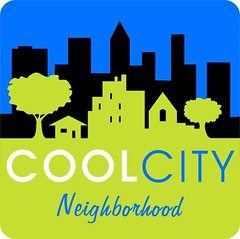Creating Brand Washington
From "Tourism firm planning new D.C. slogan," in the Washington Times:
The District's advertising agency, worried that the name "Washington" doesn't scream excitement, culture or "come back to see me again," is putting "D.C." in the forefront. "Washington" conjures up the image of the federal government, the Mall and eighth-grade class trips. "D.C.," generally the term locals use to identify the town, is more associated with its neighborhoods, growing restaurant scene, international culture and open green spaces.
The Washington, DC Convention & Tourism Corp. (WCTC) is rebranding the city to domestic and international visitors with a new logo that's literally almost all "D.C."
See the past blog entries:
-- Who ♥ DC? -- More about DC tourism-
- Central Library Planning efforts and the City Museum, how about some learning from Augusta, Maine ... and Baltimore?
-- Tourism Marketing and DC
-- You (Don't) really like me--DC and its suburbs
-- More About DC Tourism Marketing.
Note that I was interviewed for a side piece of some related branding studies.
But I will say it's about identity, which is real, not branding, which often works to create goodwill-brand equity that is attitudinal rather than concrete.
And I think this is a mistake. It's not either-or, it's and-and. Currently, the entire world defines Washington in terms of the federal-national narrative. By turning around and trying to market the local at the expense of how the world already defines the city, you just create the flip side of the market development problem that exists currently.
It's called creating a brand disconnect.
Also see these two books by Simon Anholt (which I still have to finish reading), Brand America and Competitive Identity: The New Brand Management for Nations, Cities and Regions.
This is discussed in these blog entries:
-- The benefit and curse of being Washington, DC
-- Competitive Identity and Washington, DC
and Rebranding America, a blog entry from March 2005. From that entry:
In "Re-branding America" from the Sunday Boston Globe, Clay Risen discusses how "Marketing gurus think they can help 'reposition' the United States - and save American foreign policy." The article discusses the failures of activities by Charlotte Beers, a predecessor in the position, and various projects such as a magazine for Arab youth.
"What sets true nation-branding apart from Beers's efforts, according to its advocates, is its focus on brand management rather than just brand promotion. Beers failed, says Simon Anholt, a British marketing expert and one of the world's leading proponents of nation-branding, because she tried to change people's minds without changing the ''product.'' ''What she and her team were doing resulted, and I'm tempted to use the word degenerated, far too quickly into communications,'' says Anholt, whose latest book, Brand America: The Mother of All Brands'(Cyan), coauthored with Jeremy Hildreth, appears in the United States next month."
-----------
While it is time for Brand Washington, it is time to incorporate both national images (Capitol, Washington Monument, White House) along with local images--rowhouse residential building stock, vibrant streets in Georgetown or 7th Street NW, the subway.
It's not just promotion, it's management. And note, DC doesn't have a tourism development and management business plan. DC doesn't really have a Cultural Resources development and management plan either.
To build brand equity, or to leverage DC's core competitive advantages:
1. historic architecture
2. people-centric urban design
3. identity, history, and authenticity
4. a rich transit infrastructure that allows for efficient non-automobile based mobility
5. the steady employment engine of the federal government
you have to use every opportunity to leverage and extend these advantages so that every place in the city becomes great.
A new promotional campaign isn't a plan. And saying you're the number one retail environment when you're not doesn't make it so...
A logo like this captures narratives that could be considered competitive and packages them as complementary.

Cool City Neighborhood Logo, Michigan.
Labels: branding-identity, cultural heritage/tourism, cultural planning, tourism



0 Comments:
Post a Comment
<< Home